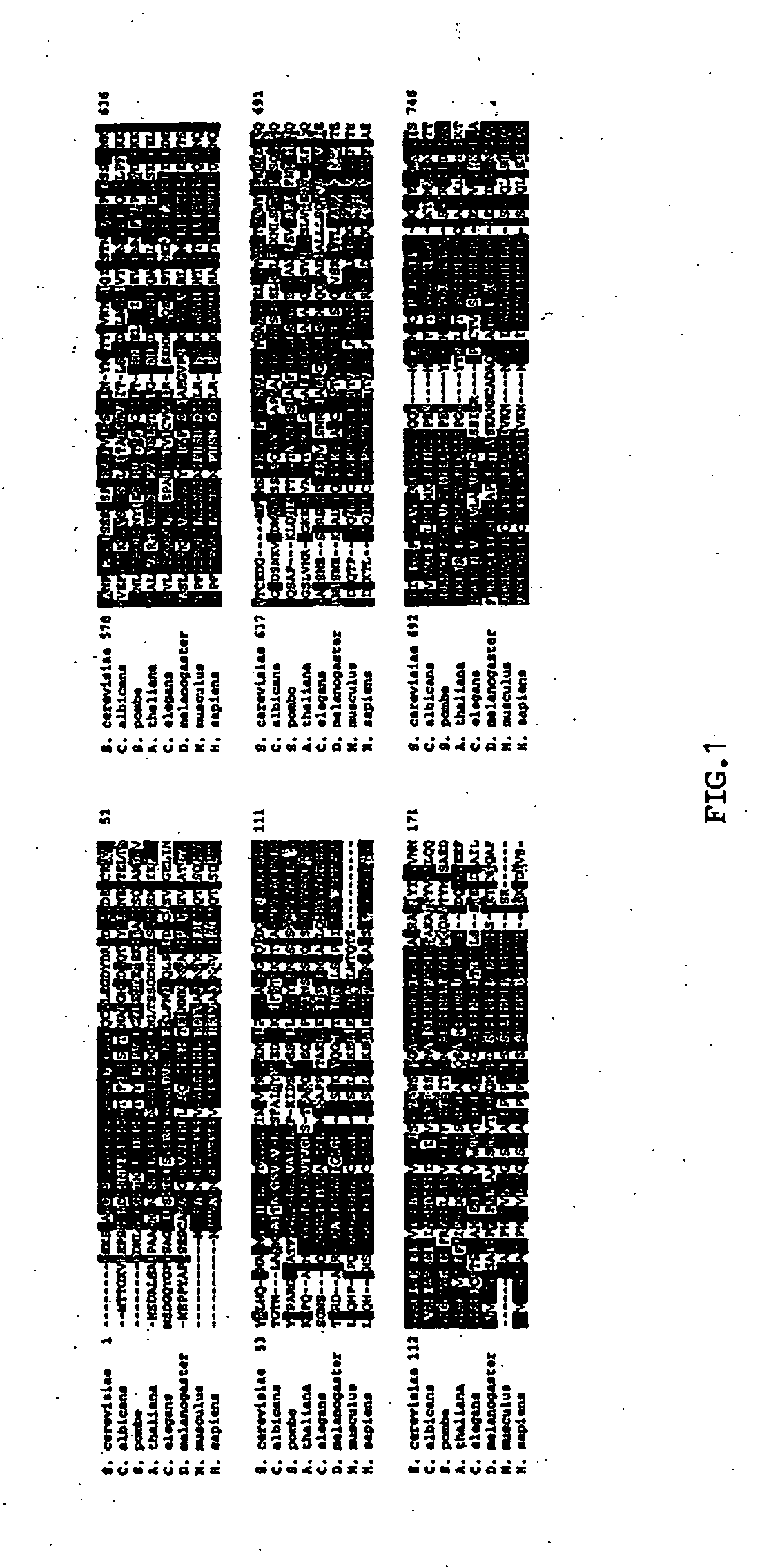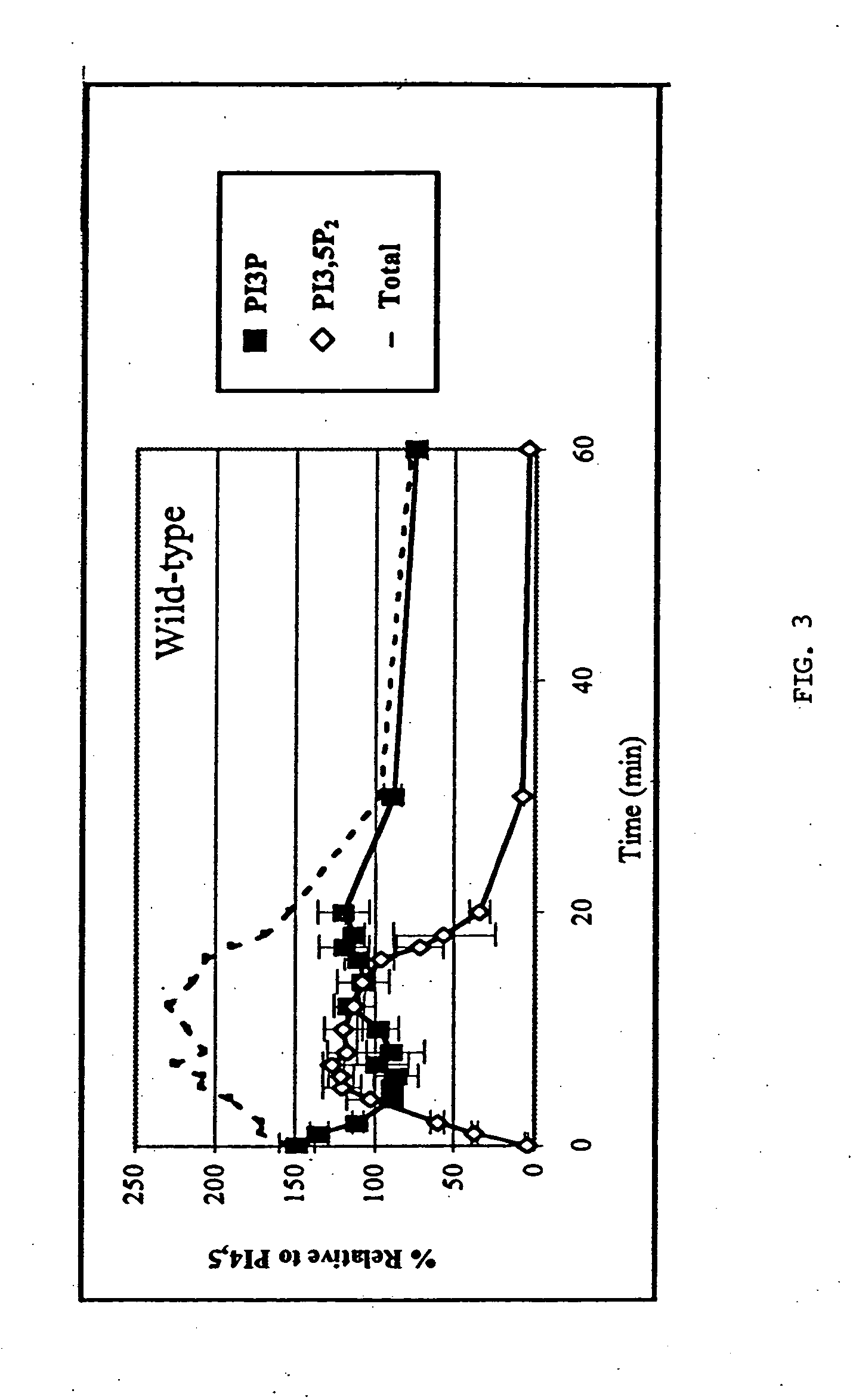Intracellular signaling pathways in diabetic subjects
a signaling pathway and diabetic subject technology, applied in the field of human molecular biology and pathology, can solve the problems of poor glucose clearance and storage of individuals, and the obscure pathways that are responsible for insulin response, so as to increase glucose uptake and high stringency nucleic acid hybridization
- Summary
- Abstract
- Description
- Claims
- Application Information
AI Technical Summary
Benefits of technology
Problems solved by technology
Method used
Image
Examples
example 1
Materials And Methods
[0290] Media, strains, and molecular biology techniques. Yeast extract-peptone-dextrose (YEPD) media, synthetic minimal media with the necessary nutritional auxotrophic supplements, sporulation media, synthetic complete media without inositol, and synthetic media without uracil or inositol (Sherman, 1991; Schu et al., 1993) were prepared as described. High pH YEPD plates with 1.8 M ethylene glycol contained: 1% yeast extract, 2% Bacto-peptone, 1.5% agar, 2% glucose, 1.8 M ethylene glycol, and 100 mM potassium phosphate (pH 7.6). The last three ingredients were not autoclaved and added separately.
[0291] Labeling yeast vacuoles with FM4-64 or quinacrine. Yeast vacuoles were visualized in vivo by labeling log-phase cells with 80 μM N-(3-triethylammoniumpropyl)-4-(p-diethyl-aminophenylhexatrienyl) (FM4-64) (Bonangelino et al., 1997; Vida and Emr, 1995) or with quinacrine (Weisman et al., 1987). Cells were viewed with a 100× objective lens on an Olympus BX-60 fluor...
example 2
Results
[0303] Identification of the VAC14 gene. The Class III vac mutant, vac14-1, was isolated via fluorescence-activated cell sorting (for description of approach see Wang et al., 1996). Like vac7 and fab1 mutants, vac14-1 cells are defective in vacuole inheritance, acidification, and morphology. These mutants have a single, unlobed, enlarged vacuole. Frequently, the vacuole spans both the mother and daughter cell resulting in an “open figure eight” vacuole morphology (Bonangelino et al., 1997).
[0304] The inventor determined (see Materials and methods) that the VAC14 open reading frame is YLR386W (sequence deposited by the Yeast Genome Sequencing Project). The VAC14 2.64-kb open reading frame encodes a novel polypeptide of 880 amino acids. There are no notable motifs except for a putative transmembrane domain (see below). However, VAC14 displays a high degree of identity with open reading frames present in other eukaryotic organisms. The two regions of highest identity are near ...
PUM
| Property | Measurement | Unit |
|---|---|---|
| temperatures | aaaaa | aaaaa |
| temperatures | aaaaa | aaaaa |
| temperatures | aaaaa | aaaaa |
Abstract
Description
Claims
Application Information
 Login to View More
Login to View More - R&D
- Intellectual Property
- Life Sciences
- Materials
- Tech Scout
- Unparalleled Data Quality
- Higher Quality Content
- 60% Fewer Hallucinations
Browse by: Latest US Patents, China's latest patents, Technical Efficacy Thesaurus, Application Domain, Technology Topic, Popular Technical Reports.
© 2025 PatSnap. All rights reserved.Legal|Privacy policy|Modern Slavery Act Transparency Statement|Sitemap|About US| Contact US: help@patsnap.com



